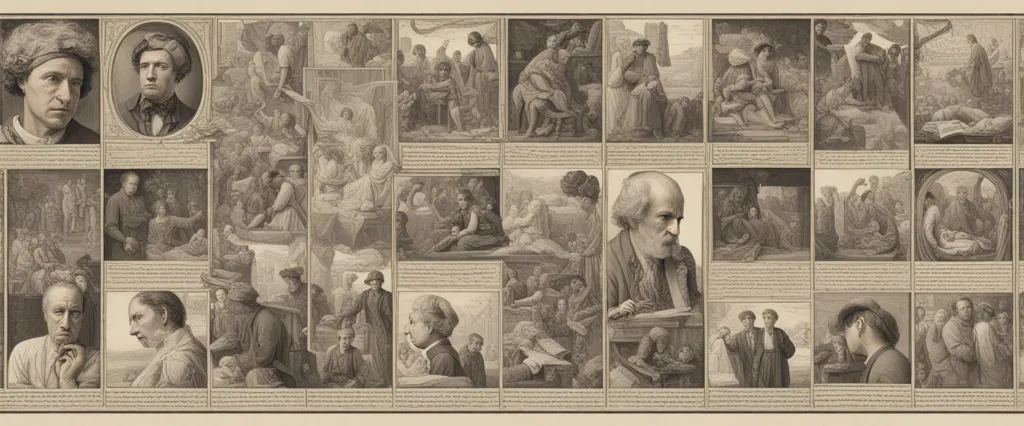In “Embracing Defeat,” John W. Dower provides an insightful analysis of Japan’s tumultuous journey towards reconstruction and recovery following its defeat in World War II. Drawing upon a wide range of sources, including diaries, letters, government documents, and popular media, Dower meticulously examines the social, political, and cultural landscape of post-war Japan. As an eminent historian and professor at MIT, Dower specializes in the history of modern Japan and the effects of war on societies. His extensive research and expertise enable him to provide a thorough and compelling narrative that sheds light on the complexities, contradictions, and enduring legacies of this crucial period of Japanese history.
Chapter 1: Shadows of Defeat
Chapter 1 of “Embracing Defeat” by John W. Dower, titled “Shadows of Defeat,” explores the aftermath of Japan’s surrender to the Allied forces at the end of World War II. Dower delves into the chaotic and uncertain state of the country, the immense destruction it suffered, and the psychological impact on the Japanese people.
The chapter begins by describing how Japan’s military leaders, government officials, and ordinary citizens grappled with the shocking news of defeat. The author highlights the confusion, disillusionment, and anger felt by many Japanese individuals who believed in the rhetoric of national invincibility perpetuated by their government. The repercussions of this defeat were not solely political or economic but rather psychological, as the Japanese people struggled to redefine their purpose and identity.
Dower emphasizes the destruction caused by the war, not only in terms of human lives lost but also in the obliteration of cities, infrastructure, and resources. Entire neighborhoods lay in ruins, and millions of Japanese citizens faced homelessness, starvation, and unemployment. The chapter also explores how the work of occupation forces and the conditions faced by the Japanese population forced the Allies to confront the complexities of managing a defeated nation.
Furthermore, Dower delves into the issue of accountability for war crimes, highlighting the conflict between the Allied desire for justice and the practical limitations they faced in their mission to rebuild and rehabilitate Japan. The chapter ends by illustrating that this chapter in Japan’s history was marked by ambiguous emotions – a mix of grief, anger, despair, shattered pride, and hope for a better future.
In summary, Chapter 1 of “Embracing Defeat” portrays the immediate aftermath and challenges faced by Japan following its defeat in World War II. It exposes the physical, emotional, and psychological devastation experienced by the Japanese people, as well as the difficult task of rebuilding a shattered nation while dealing with the legacy of war crimes and shattered belief systems.
Chapter 2: The Realities of Occupation
Chapter 2 of John W. Dower’s book “Embracing Defeat” delves into the realities and challenges faced by the occupying forces in post-World War II Japan. It highlights the complexities of the occupation, particularly in terms of rebuilding a devastated country, grappling with societal issues, and addressing the trauma of war.
The chapter begins by examining the immediate aftermath of Japan’s surrender in 1945, as the occupying forces, led by General Douglas MacArthur, faced the daunting task of rebuilding a nation physically and psychologically shattered by war. Dower emphasizes the sheer magnitude of destruction and the challenge of providing immediate relief to the millions of displaced citizens. The occupation faced numerous logistical obstacles, including food shortages and a lack of housing, as well as the daunting task of dismantling the remnants of militarism and Emperor worship ingrained in Japanese society.
Furthermore, Dower highlights the importance of understanding the Japanese people’s mindset during this transformative period. MacArthur’s initial strategy involved carefully balancing accountability for war crimes and atrocities while simultaneously cultivating the idea of Japan as a peaceful and democratic nation. Dower discusses the delicate balance between dismantling Japan’s aggressive military heritage, reshaping the concept of national identity, and fostering a sense of hope and reconciliation among the populace.
Additionally, this chapter touches on the profound impact of the occupation on Japanese women and the broader social fabric. The author explores the gender dynamics that emerged as a result of the occupation policies, delving into issues such as prostitution, sexual violence, and the empowerment of women through newfound opportunities and responsibilities.
Overall, Chapter 2 of “Embracing Defeat” provides a comprehensive overview of the challenging realities faced by the occupation forces in post-war Japan. It highlights the gargantuan tasks of rebuilding a nation and reshaping its identity while also acknowledging the unique circumstances and societal issues that emerged during this transformative period.
Chapter 3: Challenges of Reconstruction
Chapter 3 of “Embracing Defeat” by John W. Dower explores the challenges faced during the reconstruction period in Japan after World War II. As the country lay in ruins, Japan had to rebuild its shattered infrastructure, recover its economy, and redefine its national identity.
One major challenge was the scarcity of resources, both human and material. The war had taken a toll on Japan’s population, with millions dead or injured. Additionally, the country suffered from severe food shortages and a crippled industrial base. The occupation forces, led by General Douglas MacArthur, faced the daunting task of addressing these issues and helping Japan recover.
Another challenge was the need to balance the occupation policies with the Japanese people’s desire for autonomy and restoration of their sovereignty. The occupation authorities implemented a series of sweeping reforms aimed at demilitarization, democratization, and the dismantling of Japan’s feudalistic society. However, these reforms often clashed with deeply ingrained cultural and traditional values, causing friction between the occupiers and the occupied.
Furthermore, the challenge of political reconstruction brought about a clash between the occupation forces and Japanese leaders. The formation of a new democratic political system required purging and restructuring the government. Japanese political elites, who had previously served the pre-war regime, were often reluctant to cooperate or accept the imposed reforms.
Despite these difficulties, the occupation forces made progress in rebuilding Japan. They introduced land reform policies and revised the constitution to ensure basic human rights and gender equality. The economic reconstruction, led by American economist Joseph Dodge, successfully revived Japan’s economy through taxation reforms and careful planning.
Chapter 3 of “Embracing Defeat” highlights the complexities and struggles faced during the reconstruction period in Japan. It sheds light on the delicate balance between occupation policies, the aspirations of the Japanese people, and the difficult task of rebuilding a shattered nation.
Chapter 4: Legacies of War

Chapter 4 of “Embracing Defeat” by John W. Dower, titled “Legacies of War,” delves into the post-war era in Japan and examines the profound impact that World War II had on the nation. Dower explores how Japan’s defeat introduced a period of turmoil and transformation in various aspects of society, including political, economic, psychological, and cultural dimensions.
The chapter begins by discussing the monumental challenge faced by General Douglas MacArthur’s occupation forces in rebuilding and reforming Japan. The occupation sought to eradicate militarism, dismantle the Japanese Empire, and introduce democratic values. However, Dower describes how the Japanese people did not solely view this occupation as a form of punishment but also as an opportunity for renewal and rebirth.
Dower then delves into the psychological impact of Japan’s defeat, explaining how the nation’s collective psychology shifted from one rooted in wartime fanaticism to a perception of victimhood and a sense of guilt. This psychological trauma manifested in a variety of ways and had lasting effects on the Japanese people’s identity and consciousness.
Furthermore, Dower examines the economic repercussions of the war and how Japan’s infrastructure was severely damaged. The black-market economy emerged as a means for survival and as a way to restore normalcy after years of scarcity. He notes that the black market represented a shift in societal values and constituted a significant part of the Japanese post-war experience.
Lastly, the chapter explores the cultural shifts and transformations that occurred during this period. Dower explains how the occupation forces worked to suppress Japanese culture that was seen as propagating militarism. However, he also highlights the resilience of traditional cultural practices, such as Kabuki theater and haiku poetry, which survived and even thrived during this tumultuous time.
In summary, Chapter 4 of “Embracing Defeat” examines the multifaceted legacies of World War II on Japanese society. It analyzes the psychological impact of defeat, the economic challenges faced by the nation, and the transformations in cultural expressions. Dower portrays the complexities of post-war Japan, shedding light on the struggles and the opportunities that emerged during this critical period of rebuilding and reform.
Chapter 5: Cultural Transformations
Chapter 5: Cultural Transformations of the book “Embracing Defeat” by John W. Dower explores the cultural shifts that occurred in Japan following its surrender and subsequent occupation by the Allied forces at the end of World War II.
The chapter begins by highlighting the impact of American influence on Japanese society, as the occupation authorities attempted to transform Japan into a democratic and demilitarized nation. The Allied forces introduced various initiatives to dismantle nationalist ideology, such as the forced removal of militaristic monuments and symbols, the restructuring of education institutions, and the censorship of media, including films, books, and newspapers.
Dower also examines the intersection of the traditional Japanese culture with the new values imposed by the Americans. He explores the problematic issue of Emperor Hirohito, who was both respected as a symbol of Japanese identity and believed to be accountable for the war. The occupation attempted to use Hirohito as a means to achieve their goals, promoting his image as a “peace emperor” while stripping him of his divine status.
Furthermore, the chapter delves into the breakdown of hierarchical systems and the emergence of new cultural phenomena. The occupation led to the empowerment of women and the grassroots democratic movements, challenging the traditional gender roles and socio-political structures. The chapter also discusses how Japanese artists and intellectuals responded to the occupation, with some embracing Western influences and others clinging to their traditional practices.
Overall, Chapter 5 of “Embracing Defeat” sheds light on the extensive cultural transformations that took place in Japan during the post-war period under Allied occupation. The clash between traditional values and the imposition of democratic ideals resulted in a complex and multifaceted cultural landscape, leaving a lasting impact on Japanese society.
Chapter 6: Birth of Democracy
Chapter 6 of “Embracing Defeat” by John W. Dower, titled “Birth of Democracy,” delves into the transformation of Japan’s political landscape after World War II. This period witnessed the transition from autocracy to democratic governance in Japan, with American occupation forces playing a crucial role in shaping this change.
Following Japan’s surrender in 1945, General Douglas MacArthur was appointed as the Supreme Commander of the Allied Powers (SCAP), tasked with overseeing Japan’s postwar rebuilding and democratization. MacArthur, with an intent to remove militarism from Japanese society, introduced sweeping reforms. The Japanese government, under Prime Minister Shidehara, cooperated to an extent but also sought to protect some of the traditional values of the nation.
The chapter examines how the occupation enacted various measures to dismantle Japan’s militaristic machinery and instill democratic principles. SCAP purged pre-war militarists from key positions, suspended the emperor’s authority temporarily, reformed education, and promoted women’s rights. The democratization process also aimed to create a new constitution that would guarantee individual rights and loosen the grip of the emperor, ultimately leading to a more egalitarian society.
Dower highlights the tensions between the American occupiers and their Japanese counterparts during this transformative period. While MacArthur sought to institute sweeping reforms rapidly, many Japanese elites and civilians were resistant to change, fearing that too much upheaval would weaken traditional social order. The chapter emphasizes how the balancing act between preserving Japanese culture and implementing democratic ideals shaped the birth of postwar Japanese democracy.
In conclusion, Chapter 6 of “Embracing Defeat” lays out the challenges and complexities involved in the birth of Japanese democracy under American occupation. Through a careful examination of the occupation’s policies and the Japanese response, John W. Dower sheds light on this significant period in Japan’s history, ultimately highlighting the lasting impact of the reforms brought about by the occupation forces.
Chapter 7: Economic Miracles
In Chapter 7 of “Embracing Defeat” by John W. Dower, titled “Economic Miracles,” the author explores Japan’s remarkable recovery and economic growth in the aftermath of World War II. Dower analyzes how the country quickly transitioned from the ruins of war to becoming an industrial powerhouse and a leading global economy.
The chapter begins by examining the daunting challenges that Japan faced immediately after surrendering to the Allied forces. The country’s cities were in ruins, transportation systems were destroyed, and the overall economy was in shambles. However, Dower highlights that the Japanese people demonstrated resilience and a strong work ethic, which played a crucial role in their post-war recovery.
Dower explores the significance of the Occupation’s economic policies, which aimed to create a stable foundation for Japan’s reconstruction. He outlines key strategies implemented by the American-led administration, such as land reform, to redistribute wealth and encourage social stability. The author also delves into the development of labor unions and the democratization of Japan’s industries, allowing workers to have a voice in economic decision-making.
Furthermore, Dower outlines the impact of foreign aid and investment on Japan’s economic revival. He highlights the assistance provided by the United States, both in terms of financial aid and technological expertise. This aid, combined with Japan’s own initiatives, led to the growth of various industries, including steel, automobiles, electronics, and textiles.
The author also explores the dark side of Japan’s economic miracle, shedding light on how societal pressures and fierce competition led to excessive working hours and stress-related health issues among employees. Dower highlights the rise of corporate culture, emphasizing loyalty and dedication to the company, sometimes at the expense of personal lives.
Overall, the chapter on “Economic Miracles” in “Embracing Defeat” provides a comprehensive overview of how Japan, with the support of the Occupation forces and its citizens’ determination, recovered and rapidly transformed into a booming economic power after the devastation of World War II.

Chapter 8: Reconciliation and the Future
Chapter 8 of “Embracing Defeat” by John W. Dower focuses on the concept of reconciliation after World War II, and explores the challenges and prospects of rebuilding Japan and forming a new national identity.
Dower begins the chapter by discussing the dual nature of reconciliation in post-war Japan. On the one hand, there was a need for the Japanese people to reconcile with their own history and accept responsibility for the actions of their nation during the war. On the other hand, reconciliation was also required between Japan and the Allied powers, particularly the United States, in order to reintegrate Japan into the international community.
The author then examines the various approaches to reconciliation that emerged at the time. The Japanese government, led by Prime Minister Yoshida Shigeru, pursued a policy of acknowledging the war guilt while simultaneously downplaying Japan’s responsibility. This strategy aimed to maintain domestic support while also appeasing the international community.
Dower further explores the complexities of reconciliation as the United States took charge of the occupation and implemented reforms. The American occupation authorities, represented by General Douglas MacArthur, sought to change Japan’s political and cultural landscape by introducing democratic principles, economic reforms, and gender equality. This was met with both resistance and acceptance from the Japanese population.
The author also discusses the role of war crime trials in the reconciliation process. While there were initial efforts to prosecute Japanese war criminals, there was eventually a shift in focus towards rebuilding and reconstructing Japan. This decision had a significant impact on the nation’s ability to reconcile with its wartime past.
Dower concludes the chapter by reflecting on the long-term consequences of reconciliation for Japan. He emphasizes that reconciliation is an ongoing process and notes that the dynamics established in the post-war era continue to shape Japan’s relationship with its history and international community today.
After Reading
In conclusion, “Embracing Defeat” by John W. Dower is a powerful and compelling analysis of Japan’s transformation from defeat in World War II to a democratic nation. Through meticulous research, Dower provides a comprehensive account of Japan’s post-war challenges, including the Occupation period, economic recovery, cultural changes, and political developments. By uncovering the profound impact of the American occupation and the efforts of the Japanese people to rebuild their society, Dower reveals the complexities of victory and defeat in war and emphasizes the resilience and determination of a nation struggling to find its identity. This book offers valuable insights into the lasting effects of war, the complexities of occupation, and the importance of understanding history in order to navigate the challenges of the present and future.
1. “The Rising Sun: The Decline and Fall of the Japanese Empire, 1936-1945” by John Toland
In this highly acclaimed work, John Toland provides a comprehensive account of Japan’s imperial ambitions and its subsequent downfall during World War II. With meticulous research and insightful analysis, Toland explores the complex socio-political factors that led to Japan’s defeat and examines its impact on Japanese society.
2. “Hirohito and the Making of Modern Japan” by Herbert P. Bix
Offering an in-depth biography of Emperor Hirohito, Herbert P. Bix delves into the life and reign of Japan’s longest-serving emperor. The book highlights Hirohito’s complex role in the war and its aftermath, shedding light on the transformative period that shaped modern Japan.
3. “Japan 1941: Countdown to Infamy” by Eri Hotta
Eri Hotta examines the events leading up to Japan’s decision to attack Pearl Harbor in this captivating narrative. Drawing on Japanese sources and personal interviews, she explores the intricacies of Japan’s decision-making process and provides a fresh perspective on this pivotal moment in history.
4. “Japan’s Longest Day” by Pacific War Research Society
Based on the personal testimonies of those involved, this gripping account reconstructs the climactic final day of World War II in Japan. From the military coup attempt to the emperor’s surrender speech, this book offers a detailed chronicle of the tumultuous events that changed the course of Japan’s history.
5. “The Making of Modern Japan” by Marius B. Jansen
Spanning from the mid-nineteenth century to the end of the twentieth century, Marius B. Jansen’s work offers a comprehensive examination of Japan’s modern transformation. Through an exploration of political, social, and cultural aspects, the book provides valuable insights into the country’s trajectory from feudalism to becoming a major global power.




